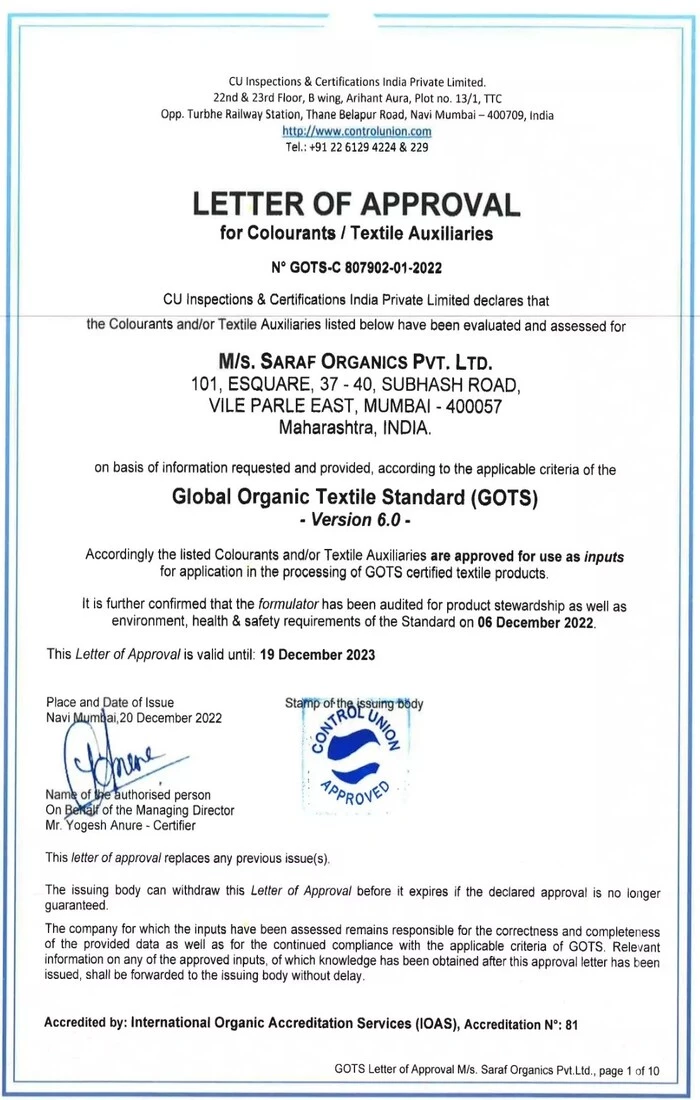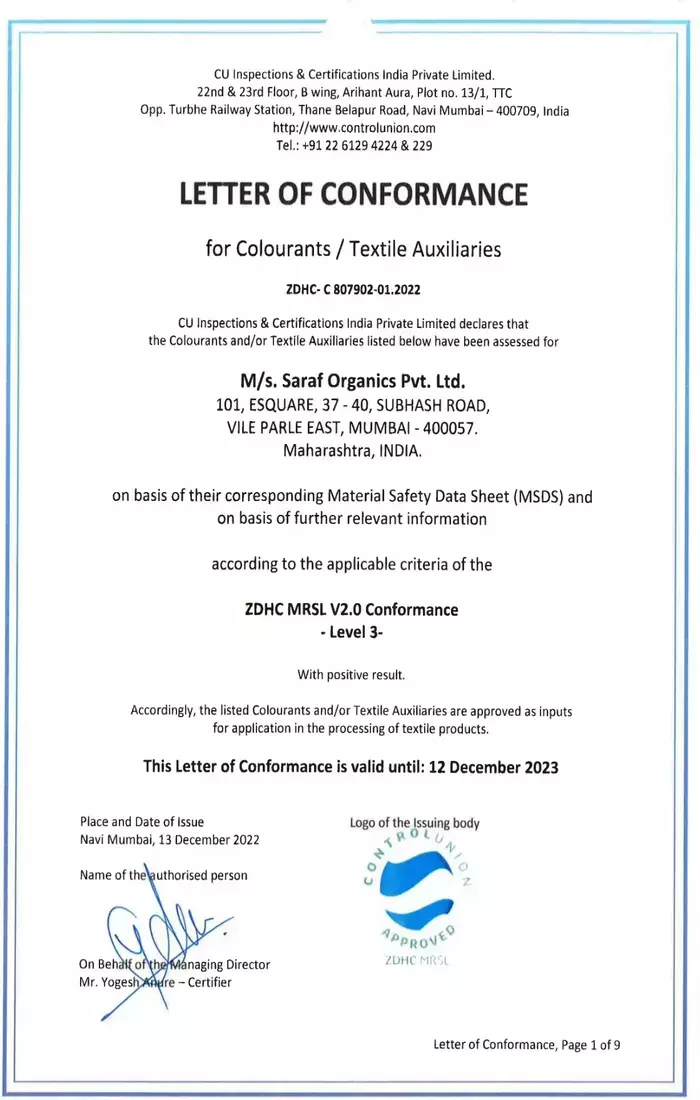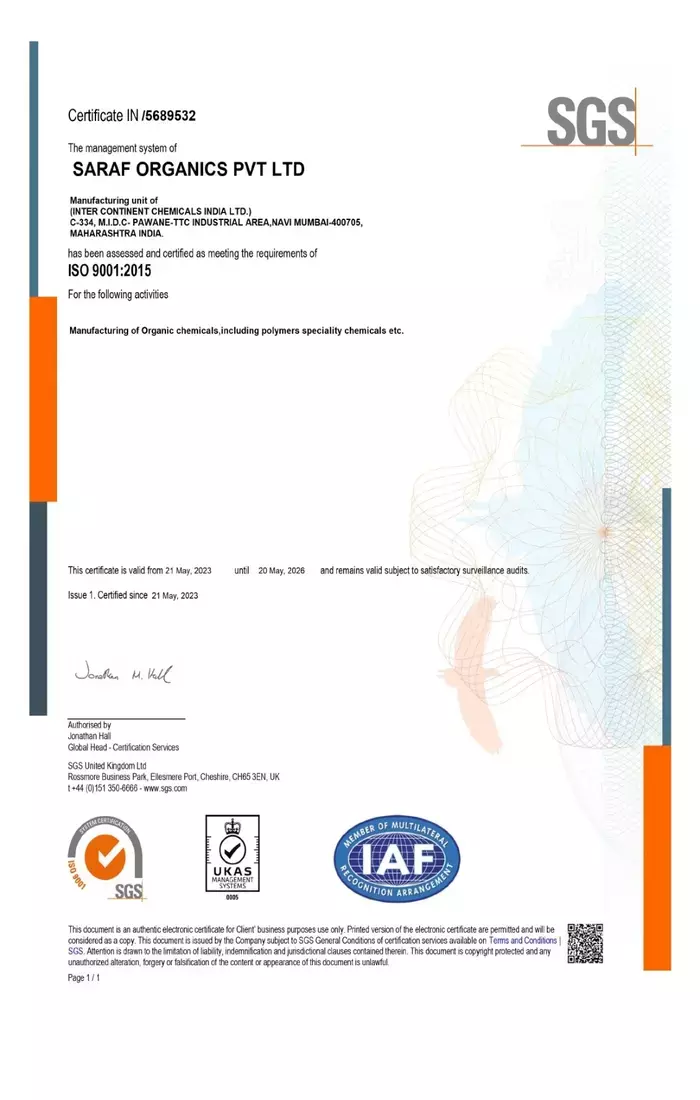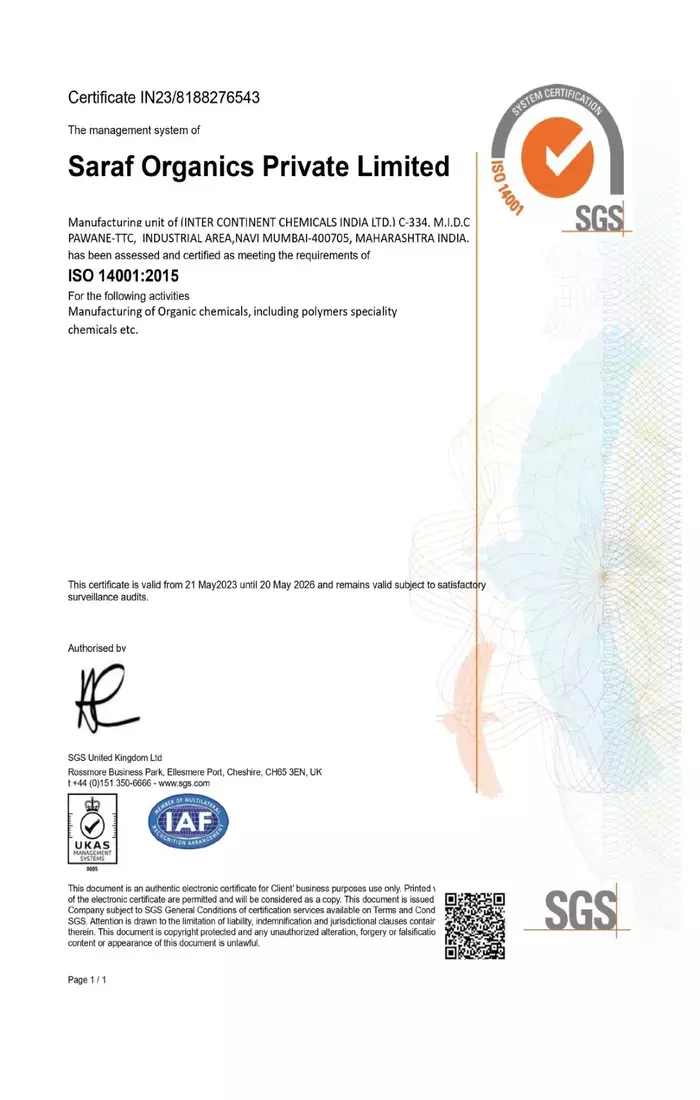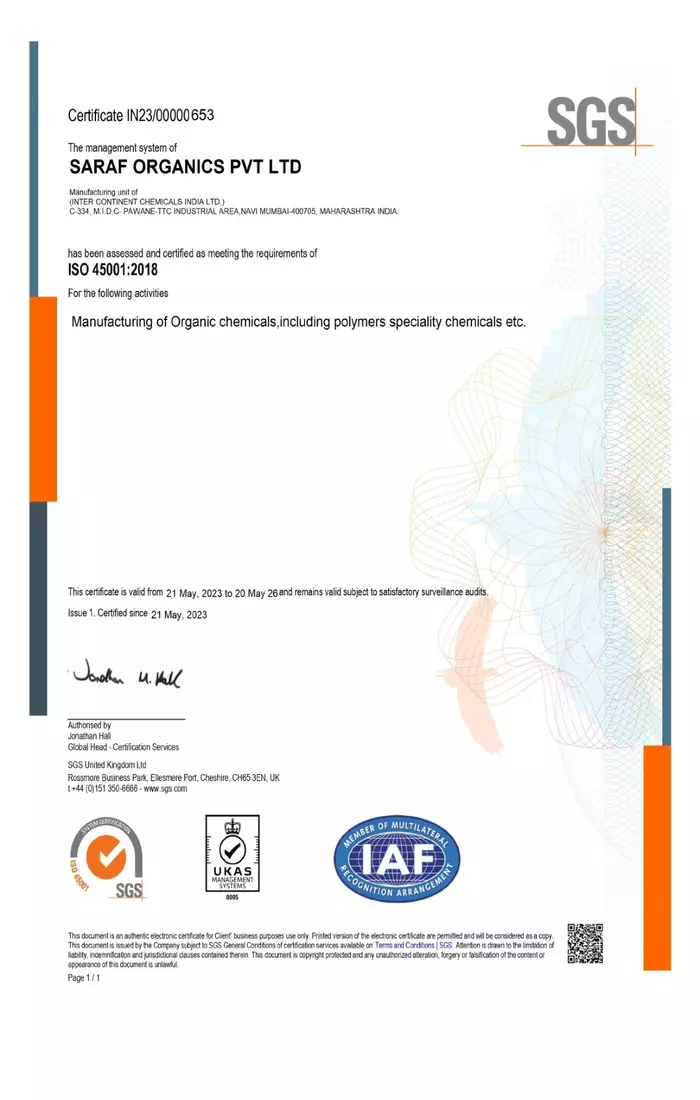Function of Fixing Agents
Improvement of Color Fastness
Fixing agents enhance the color fastness of dyed fabrics by promoting the bonding of dyes to the fibers.
Prevention of Dye Bleeding
Proper fixing reduces the risk of dye bleeding or migration of color during washing or exposure to moisture.
Enhanced Wash Fastness
Fabrics treated with fixing agents generally exhibit improved resistance to color fading during washing.
Types of Fixing Agents
Cationic Fixing Agents
These agents are effective for fixing anionic dyes, such as acid dyes. They carry a positive charge, allowing them to bond with the negatively charged dye molecules.
Non-Ionic Fixing Agents
Non-ionic fixing agents are used for disperse and reactive dyes. They do not carry a net charge and can interact with a range of dye types.
Metallic Fixatives
Certain metallic compounds, such as chrome or aluminum salts, can be used as fixing agents for specific dyes.
Process of Fixation
The fixation process usually follows the dyeing process. Fabrics are treated with a fixing agent, either in a separate bath or as part of a continuous process. Fixation may involve heating the fabric to a specific temperature to optimize the bonding of the dye to the fibers.
- PH Control
- Compatibility with Fiber Types
- Environmental Considerations
- Post-Treatment Rinsing



